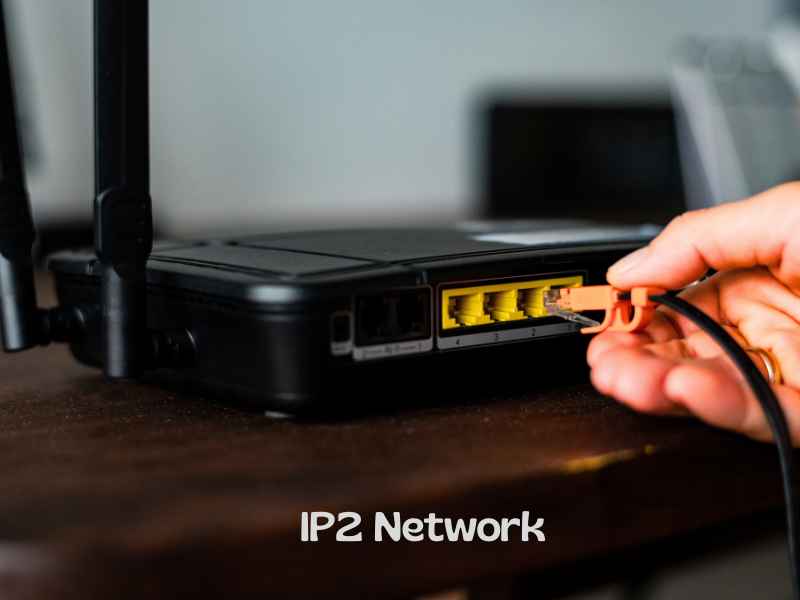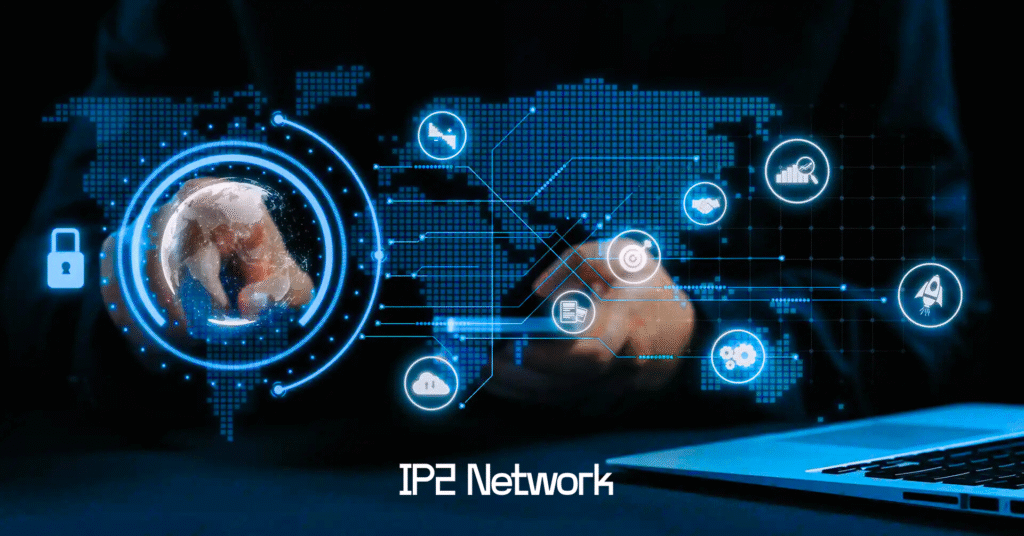The IP2 Network is emerging as one of the most talked-about innovations in modern networking. As the world becomes increasingly dependent on digital infrastructure, traditional networking protocols, such as IPv4 and IPv6, face limitations in handling the growing complexity of devices, data traffic, and cybersecurity demands. The IP2 Network proposes a revolutionary framework that is not only more resilient and efficient but also prioritizes privacy, security, and adaptability. Unlike conventional networks, which rely heavily on centralized servers and static routing, IP2 Network adopts a decentralized architecture. This enables dynamic routing of data, reduced latency, and minimal risk of a single point of failure, making it suitable for enterprise, government, and emerging IoT ecosystems.
Understanding the Core Concept of IP2 Network
At its essence, the IP2 Network is designed to address the gaps left by traditional internet protocols. It is built on a peer-to-peer architecture that allows data to travel through multiple nodes instead of being routed through a central server. This design enhances resilience and ensures faster data transmission across vast networks. What sets IP2 Network apart is its integration of cutting-edge technologies, including AI-driven routing algorithms, blockchain verification for node trust, and advanced encryption protocols. These features collectively ensure that data is transmitted securely, efficiently, and with minimal interference. The network is also designed with scalability in mind, capable of accommodating billions of devices, from smartphones to IoT sensors, without significant degradation in performance.
Key Features and Advantages
The IP2 Network offers several compelling advantages that make it stand out in the crowded landscape of networking technologies. First and foremost is its decentralized structure, which distributes data across multiple nodes, reducing dependence on centralized infrastructure. This not only increases network reliability but also minimizes the risk of cyberattacks targeting a single server. Another significant feature is AI-powered traffic management, which uses real-time analysis of network patterns to optimize routing decisions. This reduces latency, prevents congestion, and ensures smoother connectivity for high-bandwidth applications like streaming, gaming, and telemedicine. Privacy and security are also central to the IP2 Network, with advanced encryption techniques that safeguard user data and blockchain-based mechanisms that enhance transparency and trust among nodes. Additionally, the network is highly scalable, capable of evolving with the growth of connected devices and global data demands.
Bio Information
| Attribute | Details |
|---|---|
| Full Name | IP2 Network |
| Type | Decentralized Network Architecture |
| Introduced | 2024 (Emerging concept) |
| Founders / Developers | Not publicly disclosed |
| Age | Conceptual – recently developed |
| Height / Size | Not applicable |
| Family / Affiliates | Supported by nodes and operators worldwide |
| Net Worth / Valuation | N/A (Concept/technology, not a company) |
| Physical Appearance | N/A – Digital/Virtual infrastructure |
| Social Media | No personal accounts; discussed on tech blogs & platforms |
| Key Features | Decentralized, AI routing, blockchain verification, encryption |
| Applications | Healthcare, finance, media, smart cities, supply chains |
| Benefits | Fast, secure, scalable, privacy-focused, energy-efficient |
| Challenges | Adoption, regulation, interoperability with legacy systems |
| Future Potential | Global connectivity, IoT integration, edge computing, AI-enhanced networks |

Applications Across Industries
The applications of IP2 Network are vast and transformative. In the healthcare sector, the network enables secure transmission of patient records and supports telemedicine platforms, ensuring that sensitive information is both protected and readily accessible. Financial institutions benefit from enhanced security and fraud prevention mechanisms, allowing faster and safer transactions. In entertainment and media, the network enables high-quality streaming with minimal buffering, creating a smoother user experience. Smart cities leverage IP2 Network to connect IoT devices for efficient traffic management, energy distribution, and public safety monitoring. Supply chain operations are also optimized, as real-time data verification and tracking ensure transparency and accountability. Overall, IP2 is poised to support virtually any sector that relies on fast, secure, and reliable data communication.
Security and Privacy Considerations
Security and privacy are central concerns in the digital age, and the IP2 Network addresses these challenges head-on. Unlike traditional networks, where centralized servers are often prime targets for cyberattacks, the decentralized design of IP2 Network reduces the attack surface. Advanced encryption protocols ensure that data remains confidential, while blockchain-based verification helps prevent tampering and unauthorized access. Additionally, the network is designed to minimize metadata exposure, giving users more control over their personal information. For enterprises and governments, this means enhanced compliance with data protection regulations, such as GDPR, HIPAA, and other regional standards. By embedding privacy and security into its architecture, IP2 creates a more trustworthy environment for all digital interactions.
Integration with Emerging Technologies
One of the most exciting aspects of the IP2 Network is its compatibility with emerging technologies. As industries increasingly adopt Internet of Things (IoT) devices, edge computing, and 5G networks, traditional network architectures struggle to manage the resulting surge in data traffic. The IP2 Network, with its decentralized nodes and AI-powered routing, can efficiently handle massive device networks while maintaining low latency and high reliability. For example, in a smart city environment, IoT sensors monitoring traffic, energy consumption, and public safety can transmit real-time data securely and efficiently through the IP2. The network’s ability to adapt dynamically to varying traffic patterns ensures optimal performance without overloading any single node. This seamless integration with next-generation technologies makes the IP2 highly attractive for governments, enterprises, and technology providers planning long-term digital infrastructure strategies.
Challenges and Limitations
Despite its numerous advantages, the IP2 Network also faces challenges. Implementing a decentralized, AI-driven network infrastructure requires substantial investment in technology, skilled personnel, and maintenance. Regulatory compliance can be complicated, especially when data flows across international borders. Furthermore, the adoption of new network protocols often faces resistance from organizations invested in legacy systems. Interoperability with existing IPv4 and IPv6 networks remains a critical consideration, as seamless integration is necessary for gradual adoption. While the IP2 Network promises a transformative future, these challenges highlight the importance of careful planning, collaboration, and phased implementation strategies.
Future Prospects of IP2 Network
The future of the IP2 Network is promising, with potential applications expanding as technology continues to advance. Emerging trends such as edge computing, IoT proliferation, and AI-driven analytics are expected to further enhance the network’s utility. By combining decentralization, intelligent routing, and robust security features, IP2 Network can redefine how we think about digital connectivity. Its adoption may also inspire new business models, facilitate global collaboration, and create a more resilient and secure internet for individuals and organizations alike. As more industries recognize the value of efficient, secure, and scalable networking, the IP2 Network is positioned to become a cornerstone of next-generation digital infrastructure.
Conclusion
In conclusion, the IP2 Network represents a significant leap forward in the evolution of internet connectivity. Its decentralized architecture, AI-driven routing, enhanced security measures, and scalability make it a compelling alternative to traditional networking protocols. While challenges in adoption, regulation, and integration remain, the potential benefits are immense, spanning healthcare, finance, entertainment, smart cities, and supply chain management. As technology continues to advance, embracing forward-thinking solutions like IP2 Network will be critical in meeting the demands of an increasingly interconnected and data-driven world. By prioritizing security, efficiency, and user privacy, the IP2 is not just a technological innovation but a blueprint for the future of the internet.
FAQs
1. What is it?
It’s a new type of network that allows faster and safer data transfer.
It also adapts to changing traffic for better performance.
2. How is it different from regular networks?
It doesn’t rely on a central server, making it more reliable.
It uses smart routing and encryption to improve speed and security.
3. Who can use it?
Hospitals, banks, cities, and media companies can benefit.
It helps with real-time sharing, streaming, and safe communication.
4. Is it safe?
Yes, it has strong encryption and monitoring to prevent attacks.
Data stays private and secure even across multiple nodes.
5. Can it handle future tech?
Yes, it works well with IoT, smart devices, and faster networks.
It scales easily as more devices and traffic are added.


